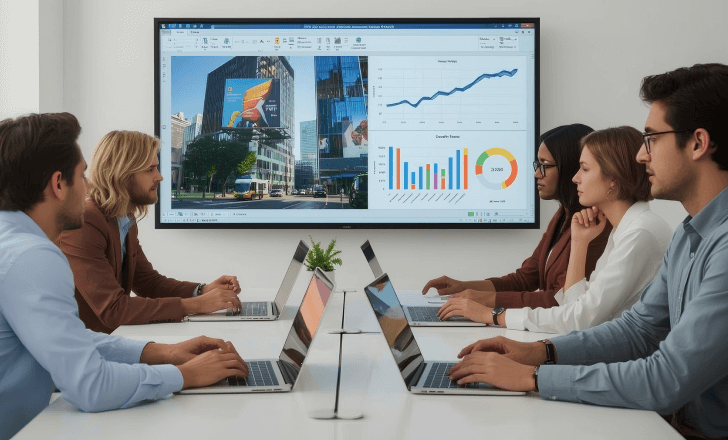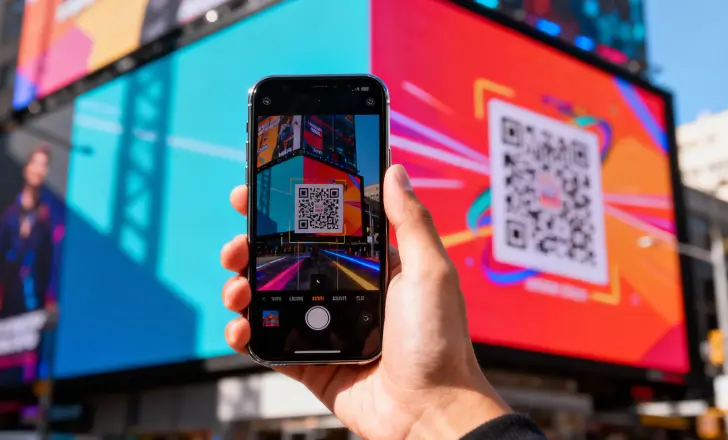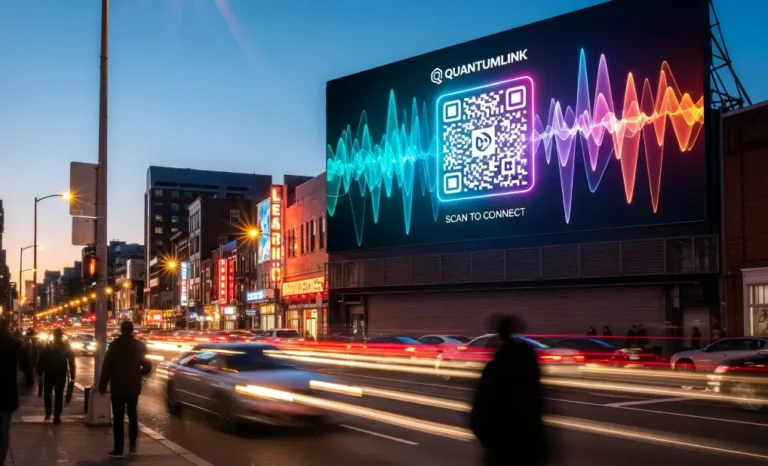Billboards used to rely solely on bold visuals and short messages to grab attention. Now, QR codes billboards are giving outdoor advertising a new layer of interaction. With a simple scan, people can access videos, discounts, websites, or app downloads instantly. This mix of physical presence and digital engagement helps brands build stronger connections with potential customers.
Using QR codes on billboards bridges the gap between traditional and online marketing. Whether it is a high-traffic area or a niche local campaign, QR codes allow advertisers to turn curiosity into measurable action.
What makes QR codes billboards so effective?
QR codes work because they simplify the customer journey. Instead of asking users to remember a URL or search online, a single scan takes them directly to a landing page or promotion. Dynamic QR codes make it even better because you can update the content anytime without reprinting the billboard. That is real ROI from a single campaign.
This flexibility gives advertisers control. They can track unique scans, see which locations perform best, and optimize their marketing strategies in real time.

How to integrate QR codes into your next billboard campaign
Integrating QR codes into billboard campaigns is easier than it seems. Start with a QR code generator that supports dynamic QR codes, such as QRCodeKIT. Create your code, link it to your digital marketing campaign, and design the billboard around it. The key is strategic placement: the code must be large, visible, and easy to scan from a reasonable distance.
Avoid clutter. A clean layout with contrasting colors and a light background ensures the QR code stands out. Add a clear call to action, such as “Scan for a special discount” or “Watch the video,” so people know what to expect when they scan.
What should advertisers link to from QR codes billboards?
The landing page or content behind the code defines the campaign’s success. You can link to different types of experiences depending on your marketing goals:
- A promotional landing page with limited-time offers
- A video or augmented reality experience for brand storytelling
- App downloads or social media profiles
- Product information or store locator pages
Dynamic QR codes let you change the destination anytime. This is ideal for billboard advertisements running across multiple locations or for campaigns that evolve seasonally.

How to design QR codes for billboards
Billboard design is about balance. The QR code must be visible without overpowering the main message. Proper sizing and visibility matter, since people should be able to scan QR codes easily even from several meters away. Use high-resolution files such as PNG or JPG to avoid pixelation in large formats.
Keep contrast in mind: a black code on a white or light background is easiest to scan. If you want to customize the design, QRCodeKIT lets you create custom QR codes with your company logo or color palette while maintaining full readability.
How to track QR code scans from billboard advertising
Dynamic QR codes give you valuable insights into performance. By connecting them to Google Analytics or using built-in tracking, you can monitor:
- The total number of scans
- Time, date, and location of interactions
- Device type and operating system used
- Repeat versus unique scans
This real-time data helps measure engagement and optimize your billboard advertising strategy based on actual behavior, not assumptions.
Are QR codes on billboards really measurable?
Yes, and that is one of their biggest advantages. Unlike traditional billboards that rely on estimated impressions, QR codes provide measurable results. You can see exactly how many people scanned, interacted, and converted. It is a perfect example of how combining physical and digital touchpoints creates a more accountable form of marketing.
Advertisers can test different QR designs, calls to action, and locations to discover what drives the best scan rates. The feedback loop turns outdoor advertising into a living, data-driven system.
How to make QR codes work for your brand
Every brand can benefit from integrating QR codes into outdoor advertising. Whether you are promoting a new service, product, or event, QR codes give your billboard an interactive twist. By using a dynamic QR code generator, you can run campaigns that adapt to your goals, from boosting app downloads to tracking customer engagement across cities.
QR codes are not just tools for digital marketers. They are bridges that make traditional billboards part of the modern marketing ecosystem.

How to ensure your QR codes billboards are successful
Success comes from clarity, visibility, and value. Here is what to check before printing:
- The QR code scans quickly under different lighting conditions.
- The call to action is clear and encourages curiosity.
- The landing page is mobile-friendly and loads fast.
- The billboard’s layout does not compete with the QR code.
If these elements align, your billboard can drive measurable traffic and brand awareness from day one.
What is next for QR codes in billboard campaigns?
As augmented reality and smart devices become more common, QR codes billboards will evolve further. Imagine scanning an ad and instantly previewing a product in 3D, joining a loyalty program, or playing an interactive game. These experiences combine the reach of outdoor advertising with the personalization of digital marketing.
Advertisers who embrace QR codes today are preparing for a future where every billboard doubles as a digital gateway, a direct link between brand and customer.
Why QR codes are the future of outdoor advertising
In the world of billboard advertising, visibility has always been key. Now engagement is just as important. QR codes give you both. They make your message interactive, measurable, and flexible, something static images cannot do alone. Whether you are a small business or a global brand, adding QR codes to your next billboard campaign means connecting with your audience in real time.
